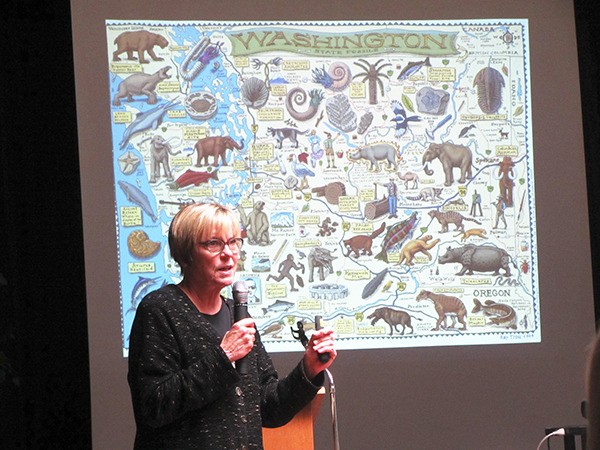The partial remains of a Columbian mammoth skull discovered in the bluffs near Sequim Bay in early January are undergoing a stabilization process at the Burke Museum of Natural History and Culture in Seattle.
The process to dry and stabilize the fossil could take nearly two years, Julie Stein, Burke Museum executive director, said.
“The key to a very effective stabilization is to let it dry very slowly,” she said. “So you don’t put a hair dryer on it, but you actually cover it up so the evaporation happens slowly.”
Once stabilized, the fossil likely will be loaned to the Sequim Museum for display.
“I know people are anxious to have the loan go through, however, we don’t want to send it here and then have it fall apart and be destroyed.”
Stein estimated the stabilization process would be done by winter 2017.
It’s unknown exactly how old the fossil is, but the rocks surrounding the specimen date back between 50,000 and 100,000 years ago and represent a gravelly riverbed, Christian Sidor, Burke Museum curator of vertebrate paleontology, told the Gazette in a past interview.
“The fossil comes from an underlying glacial event that was fairly early during the Ice Age, so it is very, very old,” Stein said.
As for the age of the mammoth itself, she said, based on the number and maturity of the teeth it was a larger, older adult.



